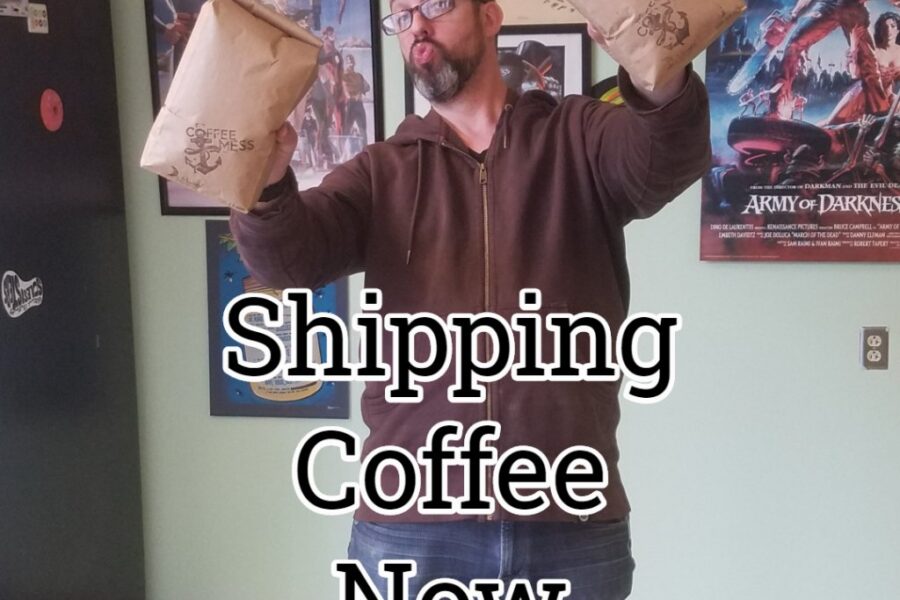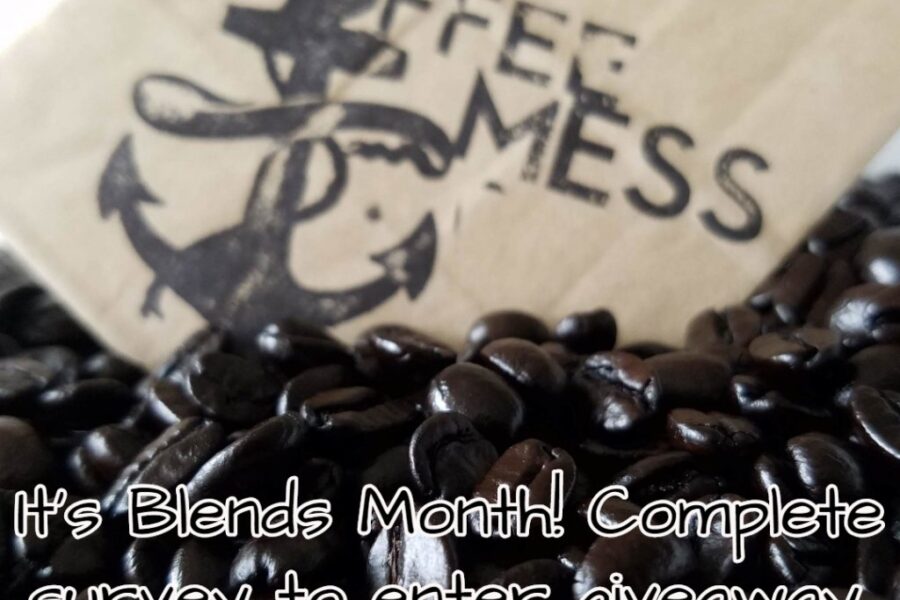This month we’re talking about coffee blends. Blends are the best selling coffees at the Mess and for many other roasters. Why? Blends have catchy names. There are other reasons too.
Here are the things to find out about blends:
The origin of the component coffees
The ratio of the coffees in the blend
The roast level of each bean, or of the blend itself.
The 2 main types of blends
From a roaster’s perspective, there are two main kinds of blends: pre-roast blends and post-roast blends.
To create a pre-roasted blend, the roaster measures and combines green coffee before putting it into the roaster. Da Mooon! Is an example of a pre-roast blend. I combine coffee from Guatemala and Ethiopia in the proper proportion, and then I roast it to the appropriate temperature. Bing: my most popular coffee.
For a post-roasted blend, the roaster selects each component bean, roasts it individually to the desired roast level, then mixes the roasted coffees according to the proper ratio. Steely d’Anvil is an example of a post-roast blend. I take a delightful Mexico and roast it dark, I take a lovely Bali and roast it light, then I measure and mix them to make another very popular blend.
Why do Roasters Blend Coffee?
Why indeed, when there are so many fantastic single-origin coffees available to enjoy?

There are a few reasons, lots of them good. Today I’ll talk about the most important one:
A good blend is greater than the sum of its parts.
The culinary universe is chock full of legendary flavor combinations. Peanut butter and jelly. Peanut butter and chocolate. Peanut butter and marshmallow fluff. Peanut butter and Miracle Whip. All these combinations except maybe that last one are the stuff of legend. Wine and chocolate. Wine and cheese. Wine and whiskey, or whisky, or wiskhy even. Never mind.
There are legendary coffee mixtures too, one in particular dating back to the earliest days of on-purpose coffee cultivation. The first coffee blend is well-known- Moka Java. It gets its name from the two places the coffee came from: the Arabian country Yemen and the Indonesian island of Java. Today coffee can be hard to get from those places so roasters attain a similar flavor profile blending Ethiopia Harrar and Sumatra coffees. It’s friggin history in a cup! Contrary to popular belief, Moka coffee (also spelled Mokka, Mocha, Makha and otherwise) is not chocolate-flavored, but used to hail from the now-disused Yemeni port of the same difficult-to-transliterate name.
Furthermore, not all coffee tastes terribly interesting– there’s a tremendous amount of coffee in the world that is well-grown, properly processed, outstanding in every way, except by itself in the cup. These coffees are great for blending! Using other coffees to fill in where one coffee may be a bit flat, roasters rescue tons and tons of OK beans and make them into something spectacular.

Some Good Questions:
From the survey I sent out last week, here are a few good questions:
Are there rules and regulations? Can literally any types of beans be combined in any amounts? Are they roasted separately then blended or are they blended then roasted all together?
Paice*****
How different blends with the same label can be when they come from different brands
quarks_bar
Are all blend names the same? Do all “breakfast blends” (or other blend names) consist of the same types/origins/specifics that I do not feel coffee-smart about to understand? I think highlander grog is tasty, is that blend standard across roasters?
rinehart****
Answer: There is no standardization between producers when it comes to coffee blends. None. No rules, either (unless you’re using the term Organic.) This is fine. The last thing any businessperson needs is some regulator telling them what’s supposed to be in their Breakfast Blend. I’m sure they’ll try to at some point. Get out of here.
So what does that mean for you, the coffee consumer? It means coffee producers are giving you hints and clues about what to expect from a blend, but you’re going to want to read and taste carefully to learn the most about a coffee.
Look out for another post or posts about blends coming up. If you haven’t filled out the 5-question survey, do so here to be eligible for a 4-bag blend giveaway at the end of March.



